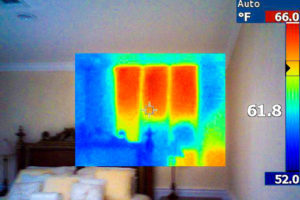This regularly-scheduled sponsored Q&A column is written by the Arlington Initiative to Rethink Energy team (AIRE). This county program helps you make smart energy decisions that save you money and leaves a lighter footprint on the environment. Got a question? Email us at [email protected]!
- Why get an energy audit?
- What does it cost?
- When should I do it?
- What is the payback?
Here is more information to nosh on over the holiday weekend. Don’t let energy waste gobble up your savings.
Why get an energy audit? An energy audit is still the best way to pinpoint the critical energy inefficiencies in your home, create a plan to fix comfort issues, and help you to make a decision when buying a home.
Who should I call? Thanks to all of the ARLnow readers who shared their experiences regarding energy audits in the comments section of our last post. Please continue to share your experiences. Who did your energy audit? What did it cost? Did you make changes? Are you more comfortable? Have you seen a difference in your utility bills?
We recommend that residents use a BPI certified auditor. These highly trained energy specialists ensure that your energy auditor will be knowledgeable and well trained. Search here for an auditor in the area.
What does it cost: Cost depends on the size and complexity of your home. For a ~2,000 sq. ft. Arlington home an energy audit will general run between $400 – $600.
When should I do it? The dead of winter and heat of summer are both ideal times to get an energy audit. The temperature difference between the outside of your home and inside is more dramatic. This allow for thermal cameras to more clearly detect issues with insulation and find drafty air leaks.
What is the financial payback: Every home is unique. The audit will provide you with a detailed report that explains how much air leakage you have along with a prioritized list of actions you can take. Each proposed action will include an estimated financial payback. Payback also comes in less tangible ways like a more comfortable and safer home.
Poll: Which of these best describes your house in the winter?
If you clicked anything but Just right, consider an energy audit this winter!
These photos (above) are good illustrations of what the thermal imaging camera sees during an energy audit. Notice the color bar to the right of both photos showing the colors that correspond to the surface temperature. These images both show missing insulation that would not be visible during a visual inspection.




